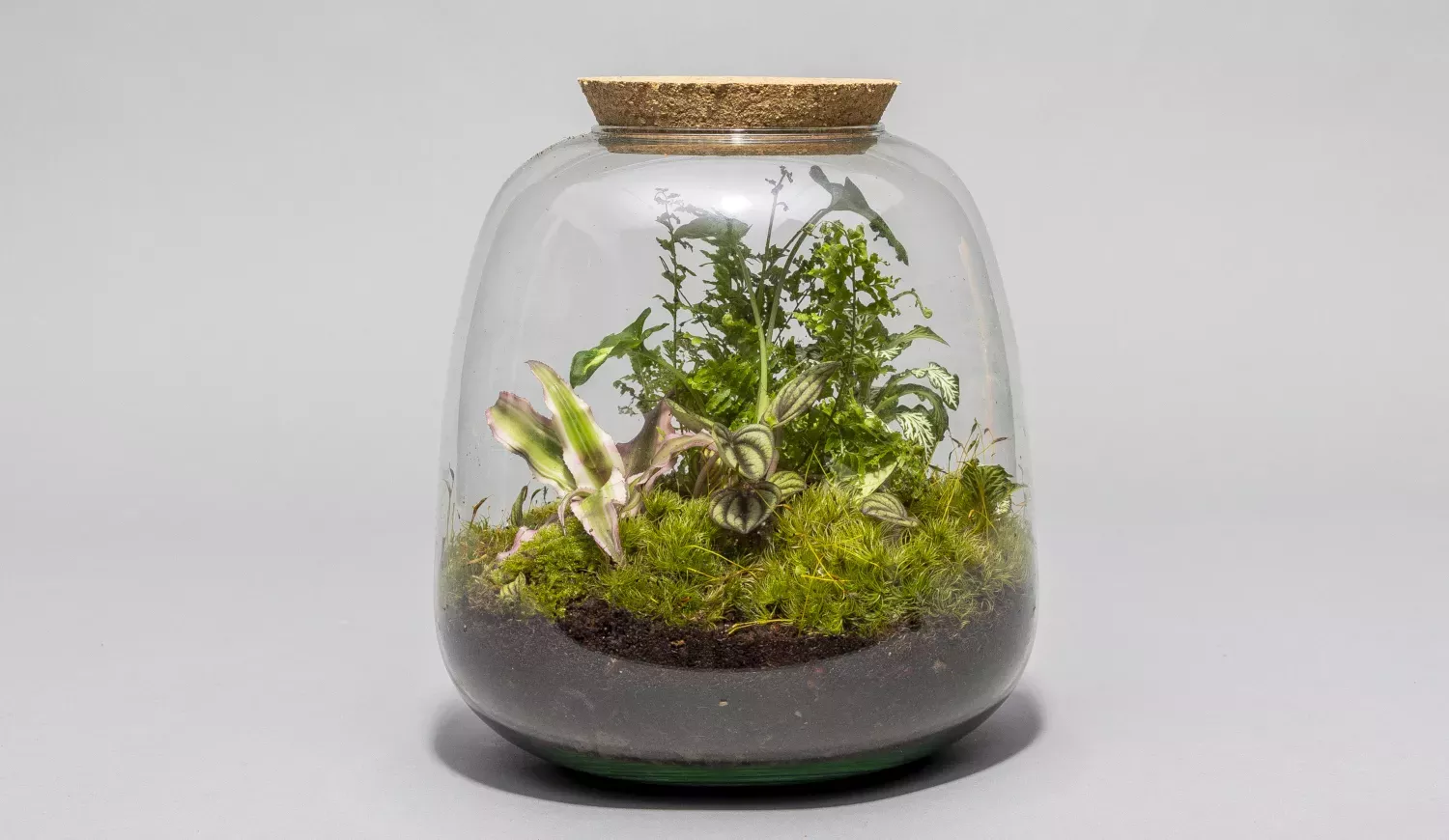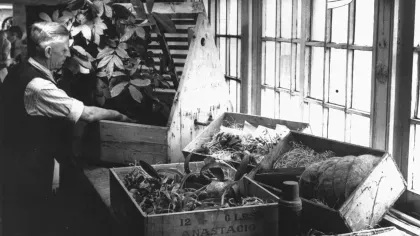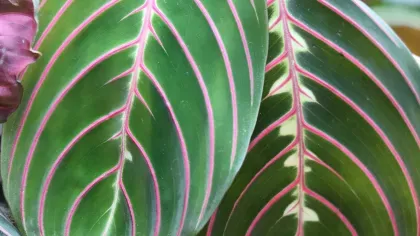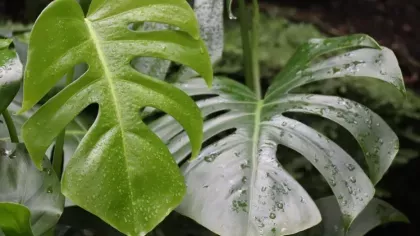30 March 2020
Make your own terrarium
These miniature glass plant displays are an easy way to bring a bit of greenery into your home.

Feel like your living room could do with some plant love?
Terraria are enclosed glass containers with a beautiful display of slow-growing plants. They are a great way to get a dose of nature indoors.
These mini glasshouses are easy to maintain, and every creation is unique.
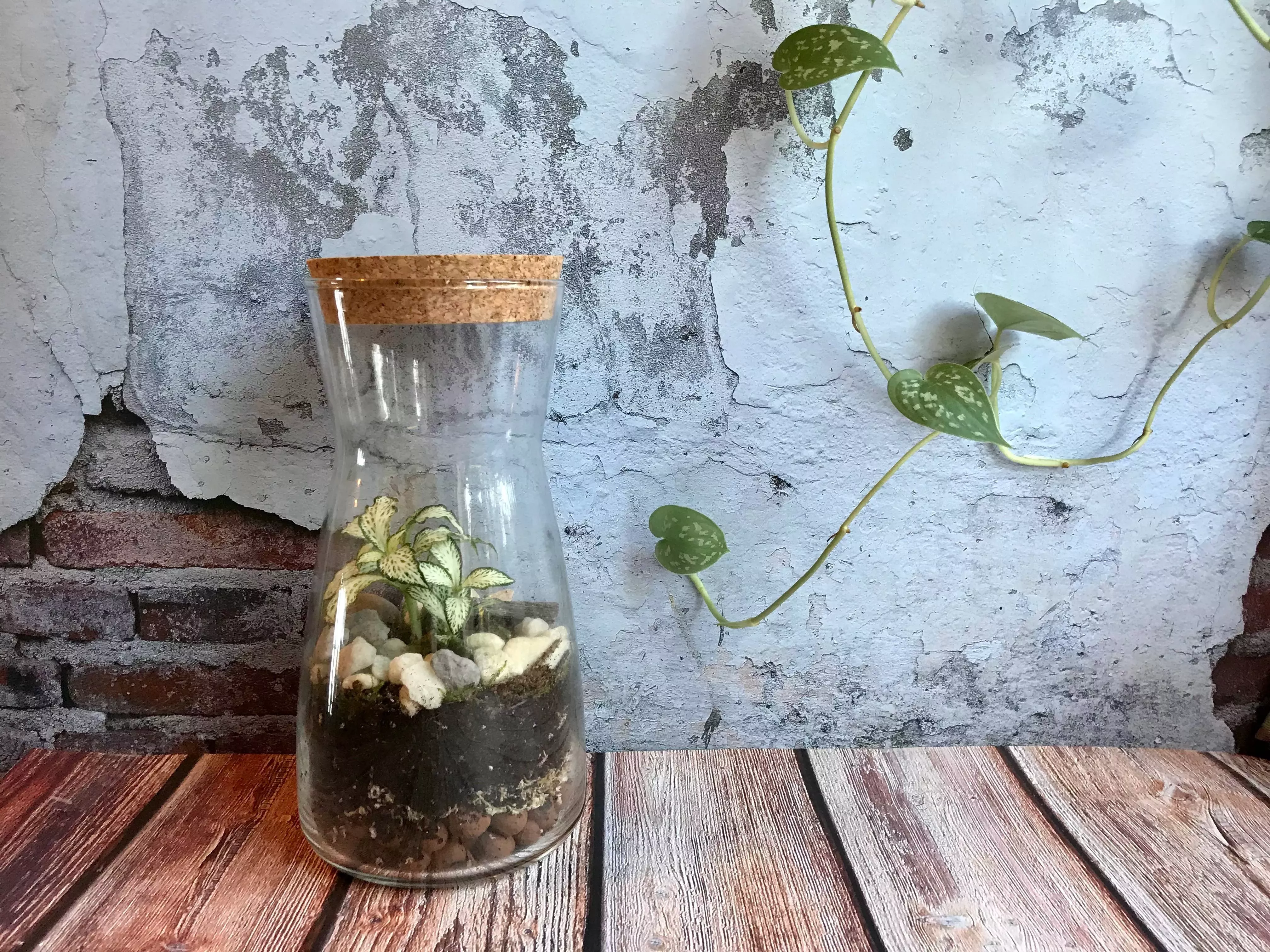
Where to begin?
You probably have a few glass containers around your house – from old jam jars to large pasta containers.
Pick any container that gives you enough room to get to a plant once it’s in there.
No lid? No problem!
Open terraria are better for cacti and succulents. Tropical plants, like mosses or air plants, fare better when you create a humid environment so make sure there's a lid closed on tight.
You’ll also need:
- Small stones or pebbles: Grab some gravel from your front yard for the base layer to help drainage along
- Soil: Potting soil is vital. Most soils will work fine for this, and you only need about a handful
- Activated charcoal: This might not be in everyone’s sheds, but easy to find. This will keep your terrarium water fresh and avoids bacteria growing
- A selection of small tools: pencil/chopstick, little trowels, long spoons will do
- Decoration: Anything you fancy to make it truly unique. Moss makes a colourful base, or little objects can bring it to life
- Plants, of course!
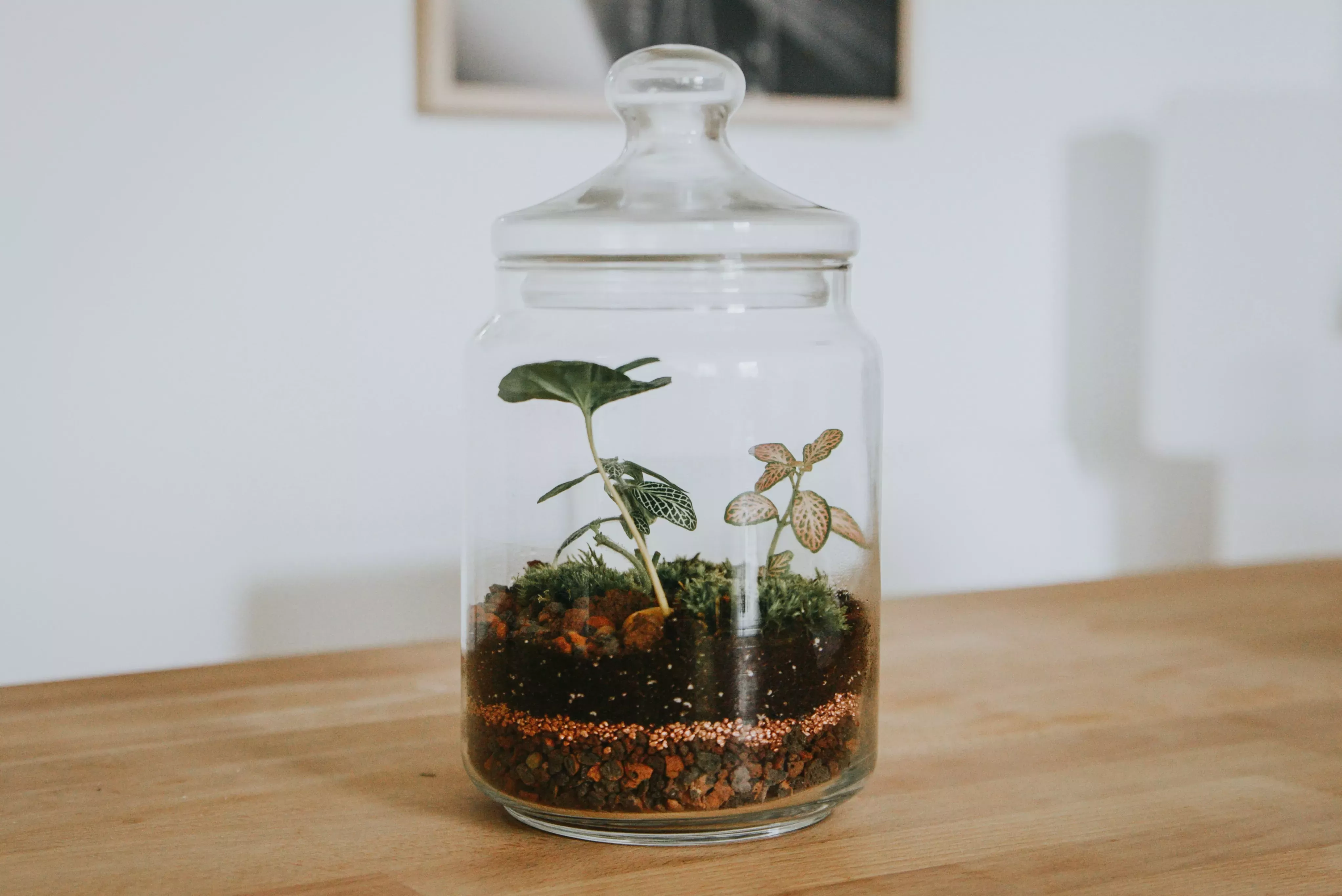
Pick the right plant
Choose a slow-growing and small plant for your terrarium.
Consider a range of leafy plants, succulents and cacti, picking the right one for your open (dry) or closed (humid) ecosystem.
Here are some suggestions, but there are many more out there:
- Air plant (Tillandsia stricta)
- Nerve plant (Fittonia)
- Meadow spikemoss (Selaginella apoda)
- Polka dot plant (Hypoestes phyllostachy)
- Sweet woodruff (Galium odoratum)
- Earth star bromeliad (Cyrpthanthus)
- Inch plant (Tradescantia zebrina)
- Hen and chicks (Echeverias)
Why not get creative and design a set of ‘scenes’, from a fairy tale woodland to an arid desert-scape?
Or keep it minimal and just have the one to start.
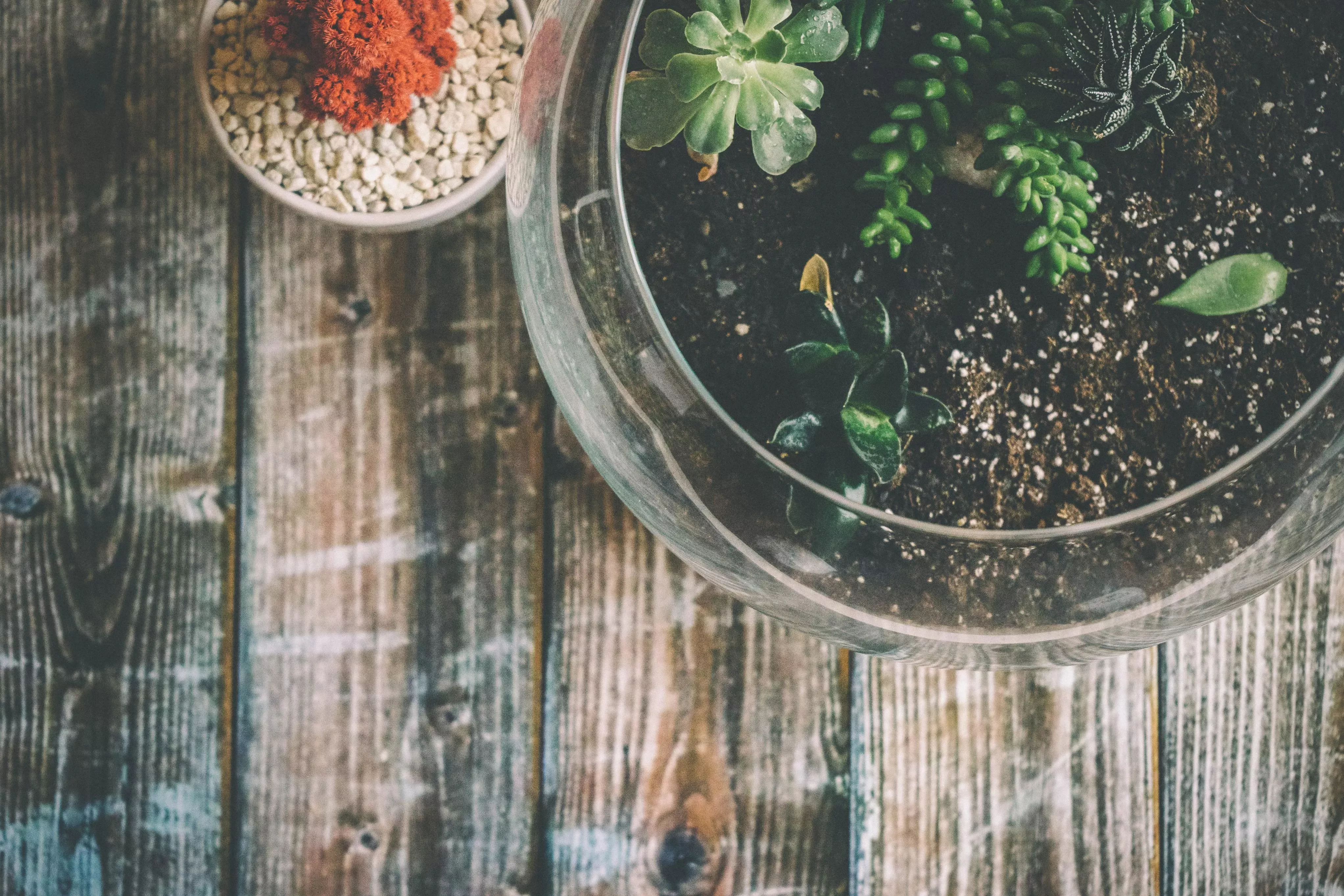
Setting up your terrarium
This can get messy, so protect your work surface if you’re building this in your living room.
- In your clean and dry container, layer up your pebbles to about 2-3cm.
- Top tip: Vary your design by turning the container on its side instead, so the lid is pointing to the side rather than upwards
- Next add the charcoal. You only need to scatter it across. (If you have some sphagnum moss, you can add it after this).
- Layer on the potting soil. Ensure there is enough, so the plant roots sit comfortably deep inside it.
- Your biggest plant goes in first.
- Using your small trowel, or long-handled spoon, make a hole for the plant.
- Gently place the plant into the soil. You can use a pencil-like tool to fill in and flatten the soil around it.
- Make sure your plant has enough room to grow a little; don’t cramp them against the glass.
- If you have more, keep adding the rest of your plants.
- Place in other stones, or maybe some moss or sand to cover up the soil if you want to.
- Put in any finishing touches.
- Close the lid – or don’t!
Top tip: Want some moss? Using a spring tine rake or a soil rake, rake over your garden. In the shady bits, some moss might grow and you can put that in your creation.
Keeping your terrarium alive
- Choose a spot with plenty of natural light (but not in direct sunlight)
- Spray your terrarium with water every couple of weeks; or when the soil is dry to the touch
- Keep an eye on it. These tiny greenhouses can form condensation when they are closed. A little is okay, but if the glass becomes foggy it might be that you’ve watered it too much
You can remove the top and dry it out for a few hours to clear it up.
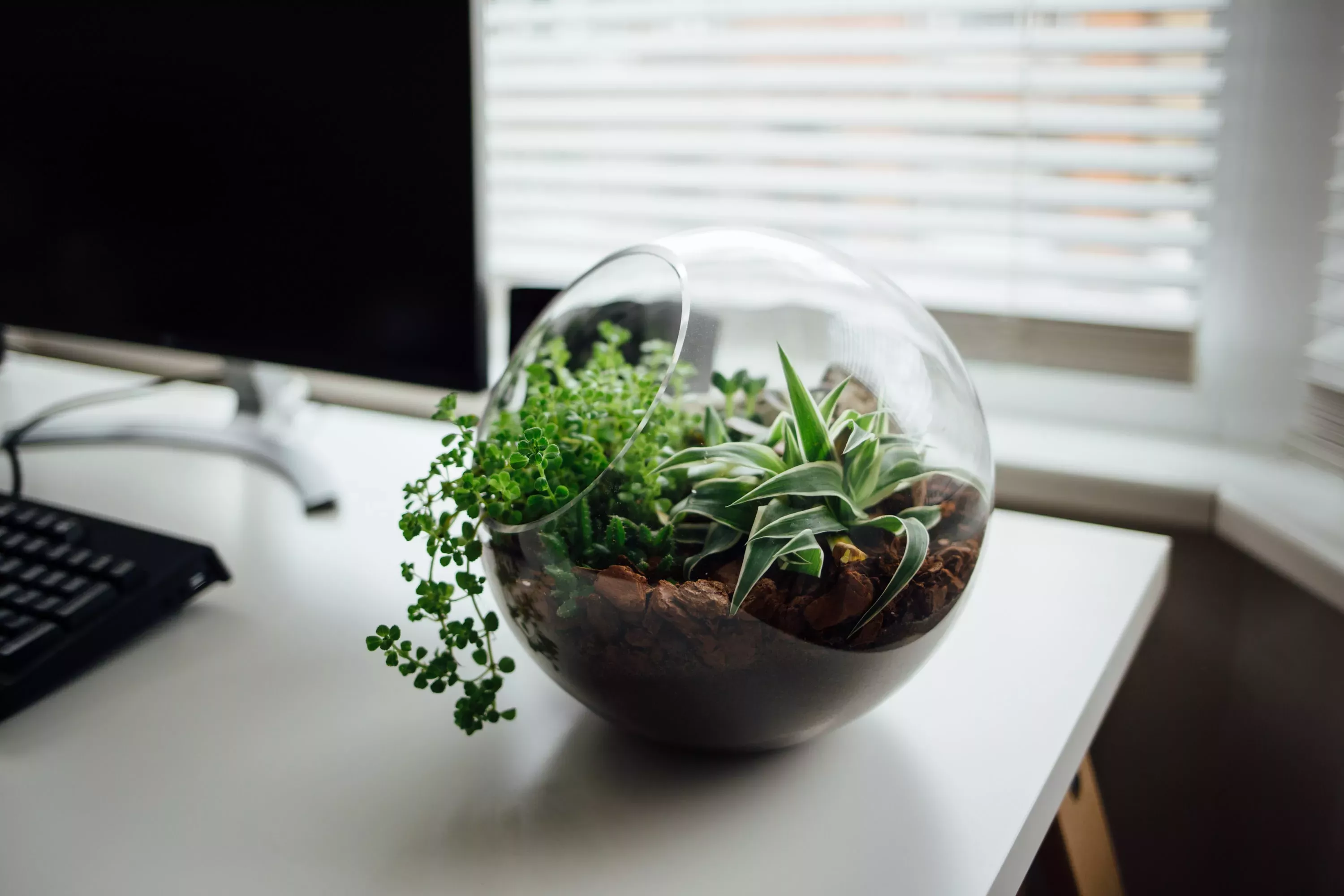
The first terrarium
The Wardian case was an early form of a terrarium.
Famously, it was discovered by accident.
Dr Nathaniel Baghsaw Ward, a keen amateur naturalist, collected a moth cocoon in a sealed glass bottle along with some fern leaves and soil and left it for three years.
The plant started to sprout and grow in a little microcosm of its tropical environment, proving that plants could survive without watering in a closed glass case.
Ward built a glass box to help transport live plants across the world, testing it in 1833 on a journey between London and Sydney.
This Wardian case transformed botanical exploration, enabling collectors to safely send specimens back to Kew.
